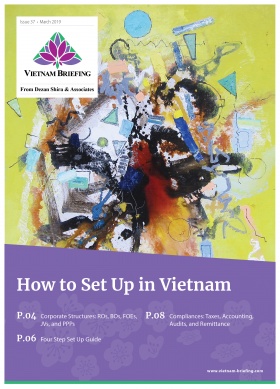Total Workforce Index 2019 – 3 Challenges for Vietnam’s Labor
- In 2019, the Total Workforce Index (TWI) ranked Vietnam’s labor force 57th out of 76 for regulation, skills availability, cost efficiency, and productivity.
- The report highlighted three deficiencies: low English proficiency, low minimum wages and widening gender pay gap.
- While improvements have been made, more will need to be done as Vietnam becomes more integrated into the global economy.
In the latest 2019 Total Workforce Index (TWI) report by ManpowerGroup, Vietnam ranked 57th out of 76, a slip from its 43rd ranking in 2018. The index evaluates 100 factors in four key categories including regulation, skills availability, cost efficiency, and productivity. The report highlights three major challenges in Vietnam’s labor force: low English proficiency, low wages, and a widening gender pay gap.
Low English proficiency
English proficiency remains one of the barriers that is keeping Vietnam from moving upstream in the global value chain. According to TWI, 60 percent of the labor force is still in the informal sector, one of the highest in Southeast Asia.
The TWI report shows only five percent of the workforce has working English proficiency. The EF English Proficiency Index (EPI) 2019 gives out the same result, with Vietnamese workers in the low-proficiency category.
10 years ago, the Vietnamese government introduced the National English Project, or Project 2020, to help college students attain a good command of English. However, the result has fallen short of expectations with only 20 percent of college students managing to fulfill the English requirement.
The problem is more acute in Tier-2 cities where FDI attracting industrial clusters are located. To retain its attractiveness to investors, Vietnam needs to introduce prompt measures to encourage workers to adopt English.
Low minimum wages
According to the report, Vietnamese workers’ average monthly salary is only US$242, a seventh of the regional average of US$1802.
The low average can be explained by the fact that a sizeable proportion of Vietnamese workers are in low-skilled manufacturing sectors and these factories are located in Region II and Region III where minimum wages are low.
The low wage has adversely affected workers’ ability to invest in themselves through upskill programs. Without constant skills development, Vietnamese workers are unlikely to weather the wave of massive technological advancement, which may lock Vietnam in the ‘cheap labor’ trap.
Fortunately, Vietnam’s National Wage Council has approved an average increase of 5.5 percent in region-based minimum wage for non-state employees, starting from January 2020. Amid a global economic slowdown, the boost in wages would help to retain workers’ standards of living, while enabling them to participate in retraining programs.
Widening gender pay gap
According to the International Labor Organization (ILO), despite having one of the world’s highest female labor-force participation rates (79 percent), the gender pay gap in Vietnam has expanded. In the TWI report, Vietnam ranked 77 out of 144 countries for gender equality, a slip from 69th ranking in 2018.
The Law on Gender Equality, which was promulgated in 2006, shows the government’s concern about the problem. However, more than a decade after the introduction of the law, there is little improvement.
Vietnam’s General Confederation of Labor (VGCL) revealed that female workers’ salaries are only 70 to 80 percent of male workers. Many believe that the pay gap is a result of sectoral discrimination, which means most females have already worked in low-paying sectors such as textiles. However, even in the healthcare sector which requires specific skills and a high sense of responsibility, women are still paid significantly less.
Regarding female workers’ important position in the labor force, it is urgent for the government to introduce punitive actions against companies that have discriminatory employment practices.
More needs to be done
As Vietnam becomes more integrated into the international trade system, employees will need to prepare for disruptive trends in jobs. The amended Labor Code, which will come into effect in 2021, is expected to provide workers with protection in wages, working conditions, union participation right. However, the government will need to continue its focus retraining and enhancing skills for the local population.
About Us
Vietnam Briefing is produced by Dezan Shira & Associates. The firm assists foreign investors throughout Asia from offices across the world, including in Hanoi and Ho Chi Minh City. Readers may write to vietnam@dezshira.com for more support on doing business in Vietnam.
- Previous Article Vietnam to Increase Minimum Wage from January 2020
- Next Article Vietnam’s Competitive Minimum Wages: How Does it Fare with its Regional Peers?































